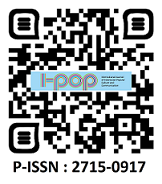Film and Reconciliation
How 'Senyap' Speaks for the G30S Victims
DOI:
https://doi.org/10.36782/i-pop.v2i2.97Keywords:
Counter-hegemony, Ideology, Stereotype, Stigma, PKIAbstract
For decades, especially during the New Order regime, the G30S victims and their families remained silent. The oppressive political system makes them afraid to speak out. Not only that, stigma, false stereotypes, and labeling are often attached to them, creating social punishments that are unfair, unexplained, and indefensible. This article examines the film 'Senyap' as a voice for G30S victims who, until now, have not fully recovered from stigma and false stereotypes. The victim's voice is a form of counterhegemony against the dominant anti-communist ideology and stereotypes in Indonesia, which for years has become a regime of truth. This film, at least, can be a medium for reconciling the past, grudges, misunderstandings, and the unclear (or obscuring) historical truth.









